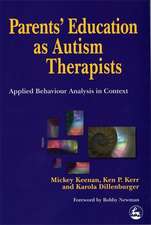Image Theory: Theoretical and Empirical Foundations: Organization and Management Series
Editat de Lee Roy Beachen Limba Engleză Paperback – 1998
This book is about a different kind of behavioral theory -- image theory. It is a psychological theory of decision making that abandons the gamble metaphor and the normative logic that the metaphor supports. Instead it sees decision making as guided by the beliefs and values that the decision maker, or a community of decision makers, holds to be relevant to the decision at hand. These beliefs and values dictate the goals of the decision. The point is to craft a course of action that will achieve these goals without interfering with the pursuit of other goals. The book begins with an overview of image theory that outlines the basic concepts of the theory and a little of its history. The next two parts correspond to the theory's two decision mechanisms, the compatibility test and the profitability test. The final section contains extensions and developments of the theory as well as cognate ideas that have their basis in the theory. This book's purpose is to provide -- in one place -- the theoretical and empirical work that has been done up to now and to suggest directions for future work.
Din seria Organization and Management Series
-
 Preț: 373.11 lei
Preț: 373.11 lei - 23%
 Preț: 327.97 lei
Preț: 327.97 lei -
 Preț: 405.06 lei
Preț: 405.06 lei - 15%
 Preț: 498.46 lei
Preț: 498.46 lei - 15%
 Preț: 503.19 lei
Preț: 503.19 lei - 22%
 Preț: 324.59 lei
Preț: 324.59 lei -
 Preț: 500.82 lei
Preț: 500.82 lei -
 Preț: 454.22 lei
Preț: 454.22 lei - 16%
 Preț: 168.81 lei
Preț: 168.81 lei -
 Preț: 492.96 lei
Preț: 492.96 lei -
 Preț: 494.87 lei
Preț: 494.87 lei - 16%
 Preț: 299.52 lei
Preț: 299.52 lei - 15%
 Preț: 449.05 lei
Preț: 449.05 lei -
 Preț: 487.75 lei
Preț: 487.75 lei -
 Preț: 200.10 lei
Preț: 200.10 lei -
 Preț: 413.55 lei
Preț: 413.55 lei - 15%
 Preț: 433.41 lei
Preț: 433.41 lei - 22%
 Preț: 326.89 lei
Preț: 326.89 lei - 18%
 Preț: 1001.07 lei
Preț: 1001.07 lei -
 Preț: 487.79 lei
Preț: 487.79 lei -
 Preț: 485.24 lei
Preț: 485.24 lei - 18%
 Preț: 1123.37 lei
Preț: 1123.37 lei -
 Preț: 482.57 lei
Preț: 482.57 lei -
 Preț: 490.83 lei
Preț: 490.83 lei -
 Preț: 361.08 lei
Preț: 361.08 lei - 24%
 Preț: 322.92 lei
Preț: 322.92 lei -
 Preț: 416.44 lei
Preț: 416.44 lei - 15%
 Preț: 426.88 lei
Preț: 426.88 lei -
 Preț: 484.47 lei
Preț: 484.47 lei -
 Preț: 486.21 lei
Preț: 486.21 lei - 18%
 Preț: 1116.77 lei
Preț: 1116.77 lei -
 Preț: 434.25 lei
Preț: 434.25 lei - 15%
 Preț: 423.89 lei
Preț: 423.89 lei -
 Preț: 477.94 lei
Preț: 477.94 lei - 15%
 Preț: 434.99 lei
Preț: 434.99 lei
Preț: 568.97 lei
Preț vechi: 669.38 lei
-15% Nou
Puncte Express: 853
Preț estimativ în valută:
108.87€ • 113.68$ • 89.90£
108.87€ • 113.68$ • 89.90£
Carte tipărită la comandă
Livrare economică 15-29 aprilie
Preluare comenzi: 021 569.72.76
Specificații
ISBN-13: 9780805826463
ISBN-10: 0805826467
Pagini: 296
Ilustrații: Illustrations
Dimensiuni: 152 x 229 x 20 mm
Greutate: 0.47 kg
Ediția:1
Editura: Taylor & Francis
Colecția Routledge
Seria Organization and Management Series
Locul publicării:Oxford, United Kingdom
ISBN-10: 0805826467
Pagini: 296
Ilustrații: Illustrations
Dimensiuni: 152 x 229 x 20 mm
Greutate: 0.47 kg
Ediția:1
Editura: Taylor & Francis
Colecția Routledge
Seria Organization and Management Series
Locul publicării:Oxford, United Kingdom
Public țintă
ProfessionalCuprins
Contents: A.P. Brief, J.P. Walsh, Series Foreword. Preface. Part I: An Introduction to Image Theory. L.R. Beach, T.R. Mitchell, The Basics of Image Theory. Part II: The Compatibility Test: Screening and Progress Decisions. L.R. Beach, E. Strom, A Toadstool Among the Mushrooms: Screening Decisions and Image Theory's Compatibility Test. L.R. Beach, C.P. Puto, S.E. Heckler, G. Naylor, T.A. Marble, Differential Versus Unit Weighting of Violations, Framing, and the Role of Probability in Image Theory's Compatibility Test. L. Benson, III, L.R. Beach, The Effects of Time Constraints on the Pre-Choice Screening of Decision Options. E.H. van Zee, T.F. Paluchowski, L.R. Beach, The Effects of Screening and Task Partitioning Upon Evaluations of Decision Options. R.E. Potter, L.R. Beach, Imperfect Information in Pre-Choice Screening of Options. R.E. Potter, L.R. Beach, Decision Making When the Acceptable Options Become Unavailable. K.J. Dunegan, Image Theory: Testing the Role of Image Compatibility in Progress Decisions. K.J. Dunegan, D. Duchon, D. Ashmos, Image Compatibility and the Use of Problem Space Information in Resource Allocation Decisions: Testing a Moderating Effects Model. D.H. Schepers, L.R. Beach, An Image Theory View of Worker Motivation. Part III: The Profitability Test: Choice. Introduction. L.R. Beach, T.R. Mitchell, A Contingency Model of the Selection of Decision Strategies. J.J.J. Christensen-Szalanski, Problem Solving Strategies: A Selection Mechanism, Some Implications, and Some Data. D.W. McAllister, T.R. Mitchell, L.R. Beach, The Contingency Model for the Selection of Decision Strategies: An Empirical Test of the Effects of Significance, Accountability, and Reversibility. Part IV: New Developments and New Directions. Introduction. K.A. Nelson, C.P. Puto, Using Image Theory to Examine Value-Laden Decisions: The Case of the Socially Responsible Consumer. K.A. Weatherly, L.R. Beach, Organizational Culture and Decision Making. C.K. Stevens, Image Theory and Career-Related Decisions: Finding and Selecting Occupations and Jobs. S.W. Gilliland, L. Benson, III, Differentiating Between Judgment and Choice: Using Image Theory's Compatibility Test. L.R. Beach, H. Jungermann, Image Theory and the Nature of Plans. T. Connolly, L.R. Beach, The Theory of Image Theory: An Examination of the Central Conceptual Structure. Part V: Conclusion. L.R. Beach, Looking to the Future. Author Index. Subject Index.
Descriere
will compliment Beach's book, Decision Making, and sell in management and Industrial?organizational programs.















